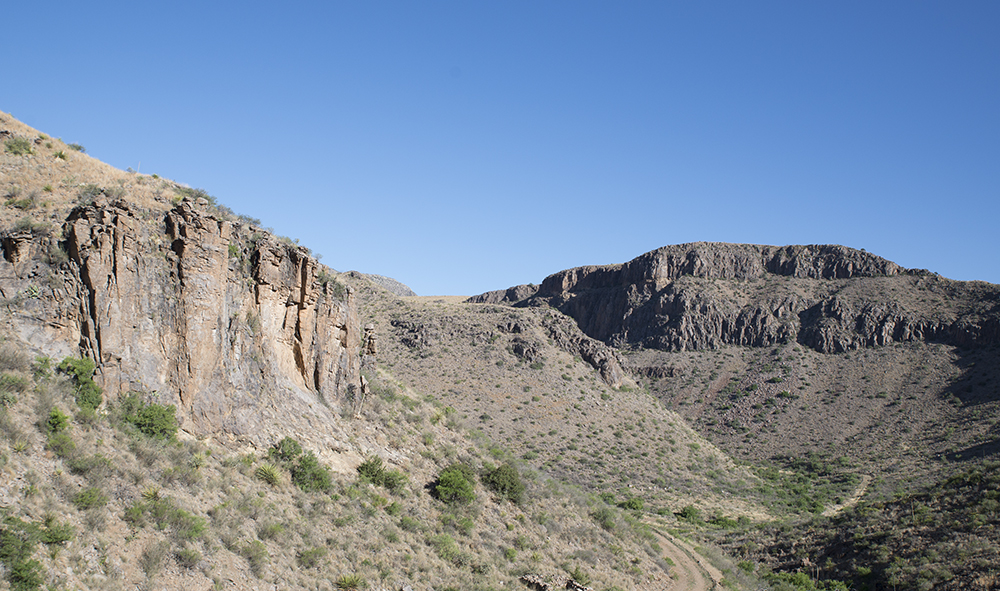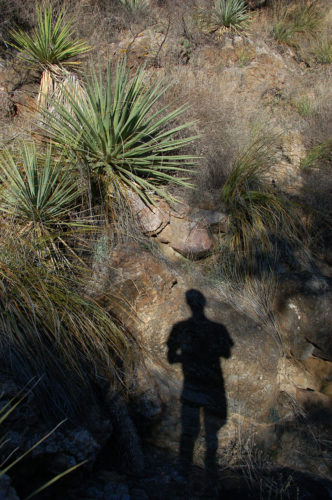
In the Davis Mountains of remote west Texas, I finally overcame a multi-year bout of “Montezuma’s Revenge.” Eight years, in fact. I first succumbed to the ailment in Southeastern Arizona. Three years later, it flared up again on my second trip to the region. While it was most intense in the grassy pinewoods of the Chiricahua Mountains, the ailment percolated deep within my bowels for years—even mere mention of the area would double me over with sharp pains of regret and anguish.
Relating gastrointestinal distress to birdwatching– or, in this case, birdseeking – may seem extreme, but the analogy conveys the urgency (of the search), and the relief of release (when the quarry is finally spotted). In this case, the aptly-named Montezuma Quail.
Since childhood, this species was quarantined in my imagination as an abstract concept based on its impossible beauty and very limited range in the American Southwest, hundreds of miles from my native Seattle. I heard they existed and many people – whom I thought I trusted – conspired to confirm this, but I was incredulous; the striking patterning and coloration of this dove-sized species just didn’t seem possible.
After two, week-long trips to the region, it became clear that this conspiracy was far-reaching, involving even local Arizonans who boldly claimed to regularly see this supposed species.
“Just go up this trail in the morning, I always see them up there,” said one. “Oh yes,” said another. “Drive up this road and you’re almost guaranteed to see one.”
After numerous pre-dawn mornings scouring the side of the road at seven miles an hour, I called “quail shit” on my Arizonan hosts. I returned to Seattle with my mind full of beautiful species – Elegant Trogon, Grace’s Warbler, and Violet-capped Hummingbird, to name a few – but they were all overshadowed with what could have been. Again.
Six years later, I signed up to co-lead a trip to west Texas with Victor Emmanuel Nature Tours and BirdNote. The itinerary listed Montezuma Quail as a possibility, stating that the Davis Mountains was one of the best places to see this “furtive species.” My skepticism piqued; it only confirmed for me how far and wide the conspiracy had spread.
Over a dozen people signed up for the trip. Perhaps, collectively, the group had enough karma for the Birding Gods to shine favorably upon us and grace us with even fleeting glimpses of one of its most cherished disciples. Or, most likely, I would lead the group – who had paid good money for this experience – down into the brush-lined pit of despair that had defined my experiences in Arizona.
I compiled a mental list of possible life species on the trip and, as one day led to the next, I was tallying checkmarks with incredible views of southern specialties like Varied Bunting, Gray Vireo and Colima Warbler. I almost mentally suppressed the sixth and final “possibility” – the Montezuma Quail. I was reticent to set myself up for yet another failure.
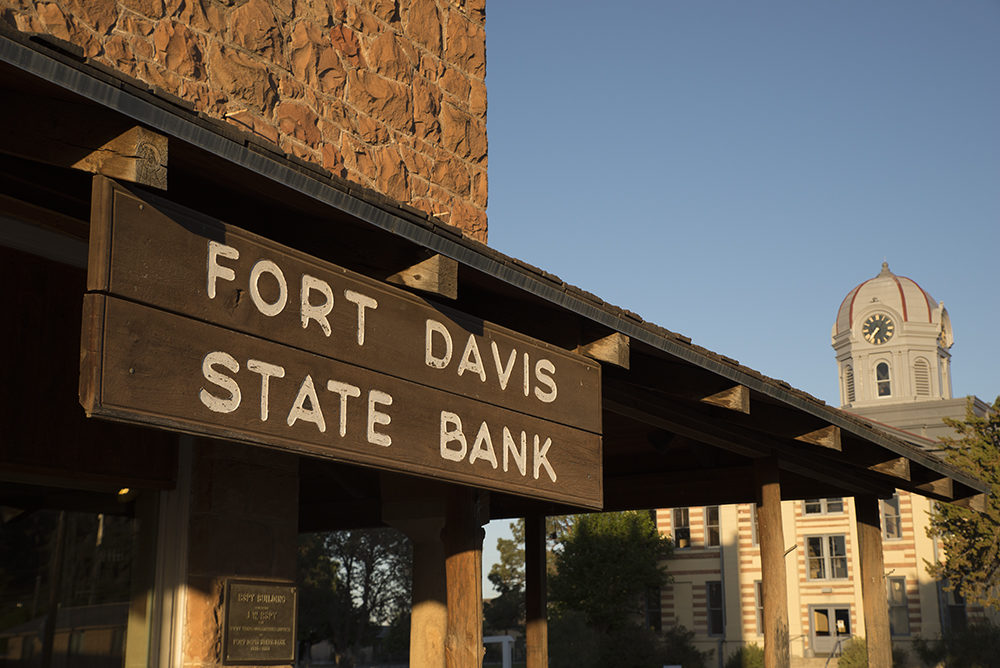
The other co-leader, Bob Sundstrom, caught glimpse of a pair of quail early in the trip while on a bathroom break away from the group. After combing the brushy hillside like a CSI tech, I confirmed that the two birds likely shape-shifted into a sand-colored stone, or a stone-colored bush.
It would be several days until we visited the Davis Mountains – the magical land where these feathered unicorns roam free – on the last stop of the trip. Our best shot was our only shot. After dropping the trip participants off at the historic Hotel Limpia to attend to a surplus of wine, Bob and I set out to scout locations for the following morning. This wasn’t birding altruism: It doubled my chances to achieve gastro-avian relief.
In the big white van, we worked up and down the two roads at the Davis Mountain State Park, finding the reported nest cavity for the Elf Owl – North America’s smallest owl species – above the dry riverbed but (surprise surprise) striking out at Camp 62 where Montezuma Quail had been reported just 24 hours prior. It was across from the trailhead to “Montezuma Quail Trail,” further twisting the dagger of irony.
We drove west into the mountains towards the Davis Observatory. I stared at the passing oak woodlands and lion-hair grasslands interspersed with ranches and wondered how many years I would have to wait before I could finally lay eyes on this friggin’ bir—
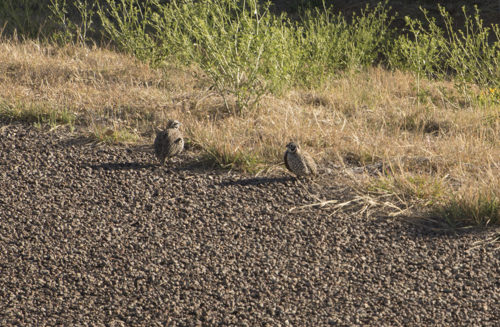
“MONTEZUMA QUAIL!” Bob screamed from the passenger seat, pointing to a grassy roadside passing at 55MPH. We turned around and crept at a quail’s pace along the highway, my eyes frantically moving between the gravel shoulder and the rearview mirror: I didn’t want death to be delivered at the grill of a Mack truck. At least not before I saw this stupid bird.
Then they appeared.
I was speechless. Two young males quietly and confidently foraged for gravel, seemingly oblivious to our approaching steel behemoth. Even though the pair lacked the male’s saturated wine-red plumage set against speckled black and white, the intricacy of their plumage was mesmerizing.
We enjoyed them for a few minutes – about as long as we were comfortable parking on a highway – before we dutifully returned to the hotel to round up our convivial participants to show off our quarry. All for not: Twenty minutes later, the birds were gone.
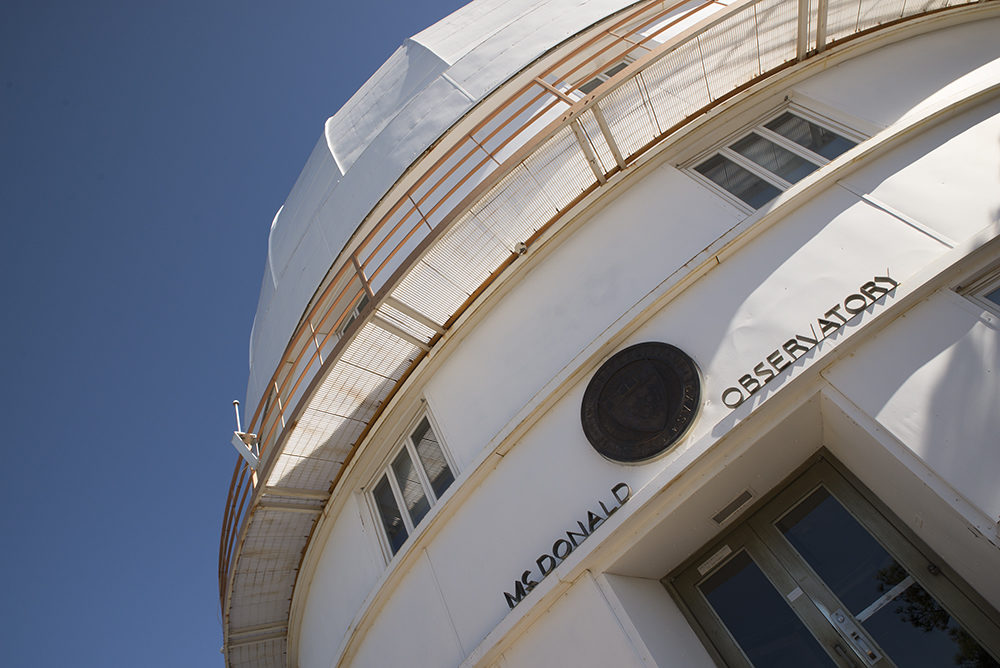
I searched with renewed energy the following morning. Our first stop at the state park yielded nothing; a walk at the nearby McDonald Observatory afforded an impressive flock of migrating songbirds but, again, no quail. Down the road, a mile-long walk through Lawrence Wood picnic area gave us beautiful views at the long-sought Black-chinned Sparrow – our first from the trip. Stepping off trail on the walk back flushed a small flock of quail. As quickly as they exploded out of the grass – and shot up our heart rates – they disappeared into the rocks of a nearby hillside. Glimpses were afforded to a handful of trip participants; a few more heard the ominous call of the male, a sound like the ascending, metal-on-metal trill of a train inching to a stop.
Unfortunately, that was it. That was our last shot. We solemnly got back into the van, happy with the sparrow, but always thinking about what could have been. One of the biggest birders on the trip was going back home with only 7 of the eight targets she had for the trip. Ironically, she was from Arizona.
I knew the feeling well.
I drove the remaining stretch of rural highway out of the Davis Mountains towards El Paso. We recounted the best sightings of the trip while I scanned the side of the road. The jovial chatter in our van was a good sign—the satisfaction was palpable. Bob, sitting in the passenger seat, removed his glasses to clean them in his lap.
A softball-sized pair of rocks protruded from the horizon of the road as we crested a small hill. One moved.
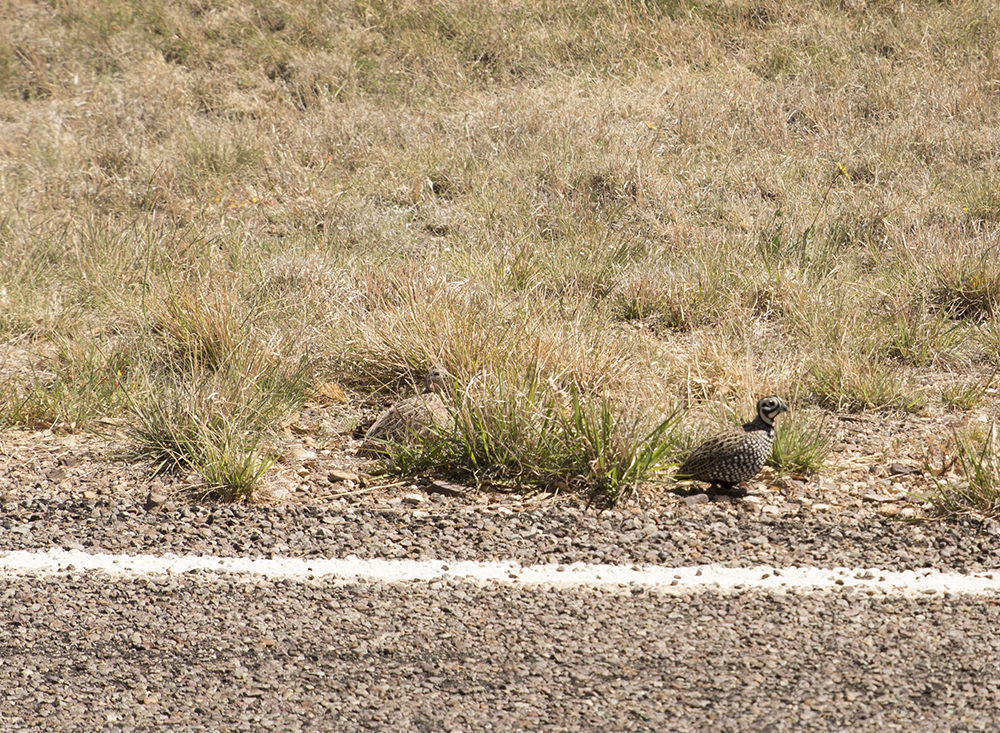
“Montezuma Quail!” I yelled, slamming the brakes to a near four-wheel skid. We maneuvered the three-vehicle caravan around – stressing an already overworked drivetrain – and crept slowly onto the opposite side of the road. Nonchalantly, our quarry continued to forage as exaltations of relief passed through the van, noses pressed against the glass.
For fifteen minutes we sat, engines idling, stunned. The male’s striking black-and-white head juxtaposed against an intricate collage of reds and browns, like a small, portly man wearing a Mexican wrestling mask and a camouflaged cloak. The female, though more drab, was also impressive, like a sun-faded version of her male counterpart. The pair gradually retreated from the road. Interestingly, they didn’t run with their heads upright – like other quail species – opting to lower their heads to snake through nearly unseen tunnels in the grass. Stripes running along their back from head to tail obfuscated their exact location, reminiscent of the optical illusion that makes it difficult to spot a retreating garter snake.
We pulled away, turned around, and continued down the road towards El Paso sharing high-fives and photos. The Birding Gods shone down, providing a brilliant ray of light as the trip was fading to dark.
I had my revenge, and it never tasted so sweet.
Never satisfied, I was already pondering the next gaps in my life list. How about a Red-faced Warbler or Manx Shearwater?
